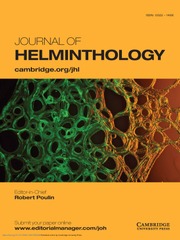No CrossRef data available.
Article contents
Diversity of trematodes (Platyhelminthes) in Mexico with an assessment of the availability of genetic data for their conservation
Published online by Cambridge University Press: 06 January 2025
Abstract
Trematodes are one of the most abundant and diverse groups of platyhelminths. They parasitize all major groups of vertebrates as definitive hosts and therefore play an important role in ecosystem composition. It is estimated that 18,000 to 25,000 species of trematodes exist worldwide, of which 685 have been reported in Mexico. Although this group is an integral part of ecosystems, there are still no studies that highlight the importance of parasites, especially in conservation approaches. Here, we recompiled information on the occurrence and available genetic data of trematodes in Mexico to estimate the specific richness of their representation across the Protected Areas (PAs) and provinces of Mexico. We consulted national and international databases (e.g., GBIF, CONABIO, CNHE-UNAM) and genetic repositories (e.g., GenBank) to generate curated datasets. We obtained 6,780 records that represent 99% of species reported in Mexico (680 species), of which only 10.2% are included in PAs. For genetic data, we found information from five nuclear regions (28S, 18S, ITS1, ITS2 and 5.8S) and two mitochondrial genes (COI and NAD1) for 118 species, of which only 3.5% were associated with PAs. With these results, we provide a spatial distribution of records (occurrence and genetic data) of trematodes present in Mexico and its PAs and identify poorly represented biogeographic provinces (e.g., Sierra Madre del Sur). We also highlight that this is the first study in Mexico to include this group in a conservation approach, and we record valuable information for future studies.
- Type
- Research Paper
- Information
- Copyright
- © The Author(s), 2025. Published by Cambridge University Press


